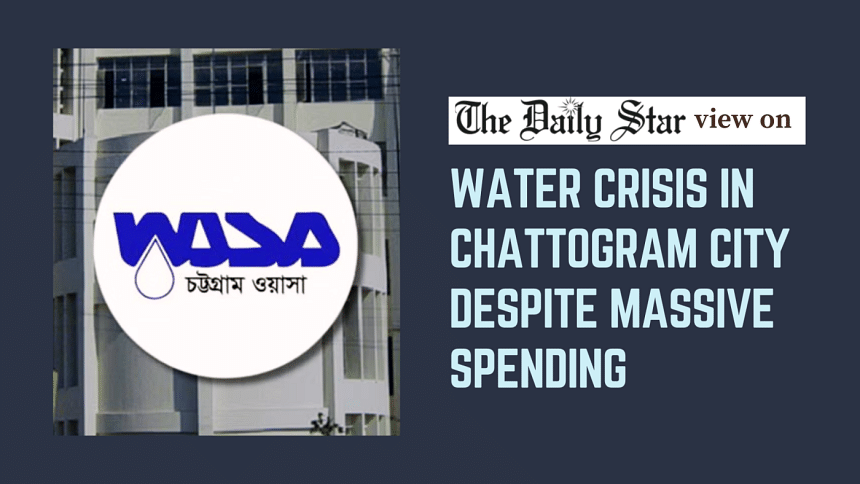Chattogram Wasa must address the persistent water crisis

We are concerned about the plight of Chattogram city residents deprived of access to water from WASA. According to a report by Prothom Alo, despite WASA spending about Tk 8,800 crore since 2009 on eight water supply projects, about a third of the residents still struggle for safe water every day. Their number—considering the variations in population figures given by the Bangladesh Bureau of Statistics (BBS) and Chattogram City Corporation (CCC)—would be anywhere between 12 lakh and 21 lakh people, underscoring the severity of the problem. Without any supply from WASA, they are forced to rely on deep tube wells, purchased water, or nearby ponds and other water bodies, leaving them exposed to various risks.
Chattogram WASA has about 98,000 customer connections. Excluding those without WASA lines, the current daily demand is 560 million litres, while daily production capacity stands at 500 million litres. That means WASA is struggling to serve even those connected to its grid. The crisis, according to the above-mentioned report, is most severe in 10 wards: 1, 2, 10, 11, 18, and 37-41. Apparently, WASA connections simply don't exist in over 100 neighbourhoods.
What's equally troubling is that WASA has no master plan to address the needs of a growing city even after six decades of operation. A comprehensive master plan based on accurate data and future projections could be useful in mapping out where pipelines are missing, how much water is required in each zone, and how many treatment plants must be built. Without such planning, the agency has been executing project after project in an ad-hoc manner, which is deeply troubling. We urge the Chattogram WASA to treat this issue with the urgency it demands, as access to safe water is a fundamental right.
As things stand, the first step towards resolving the crisis should be to develop a robust master plan. As experts have pointed out, this plan must account for future population growth, area-specific needs, and pipeline expansion to neglected zones. Moreover, given the questionable planning and execution of past projects, WASA must improve its project design and implementation capacity, and also address the mismatches in existing population figures so that everyone benefits from its projects and initiatives without exception.


 For all latest news, follow The Daily Star's Google News channel.
For all latest news, follow The Daily Star's Google News channel. 









Comments